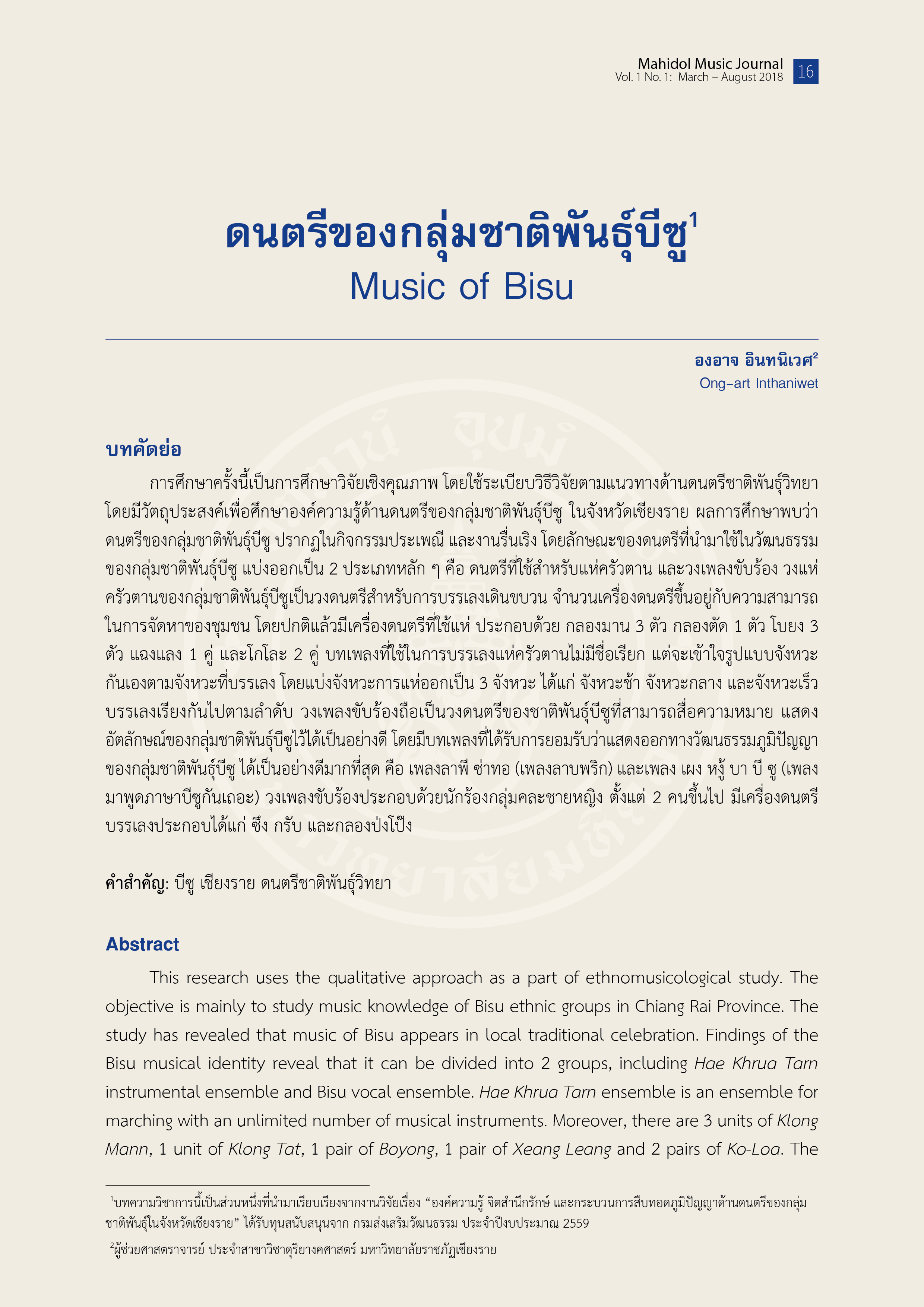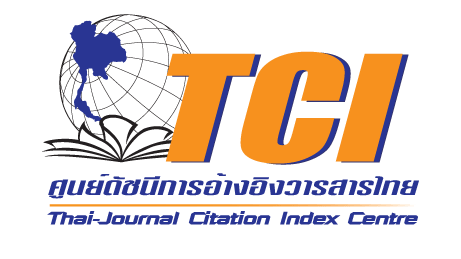Music of Bisu
Keywords:
Bisu, Chiangrai, ethnomusicologyAbstract
This research uses the qualitative approach as a part of ethnomusicological study. The objective is mainly to study music knowledge of Bisu ethnic groups in Chiang Rai Province. The study has revealed that music of Bisu appears in local traditional celebration. Findings of the Bisu musical identity reveal that it can be divided into 2 groups, including Hae Khrua Tarn instrumental ensemble and Bisu vocal ensemble. Hae Khrua Tarn ensemble is an ensemble for marching with an unlimited number of musical instruments. Moreover, there are 3 units of Klong Mann, 1 unit of Klong Tat, 1 pair of Boyong, 1 pair of Xeang Leang and 2 pairs of Ko-Loa. The songs were named due to their tempos when they were played, e.g. slow-tempo song, moderate-tempo song, or fast-tempo song. Besides, Bisu vocal ensemble is a crucial medium for learning Bisu culture since the content of song is able to express the identity of Bisu heritage. They have 2 popular songs in the community. First is “la pi sa tor” (derived from the name of traditional food) and second is “pang ghu baa bi su” (“Let’s speak Bisu language”). Bisu vocal music can be sung by women or men and no limited number. Musical instruments are sung (stringed instrument of Northern Thailand), krub (wooden clappers), and klongpong-pong (a type of drum).

Downloads
Published
How to Cite
Issue
Section
License

This work is licensed under a Creative Commons Attribution-NonCommercial-NoDerivatives 4.0 International License.
The copyright of the article belongs to the author. Published articles represent the views of the authors. The editorial team neither necessarily agree with nor take any responsibility for the article.





